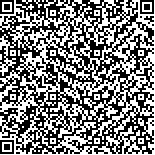|
| Abstract: |
| Service quality is a major factor that affects how public transport users evaluate bus service. In order to evaluate how bus users make trade-offs across travel cost, time, reliability, etc., and to investigate the extent to which the components of service quality vary according to relevant trip characteristics, this paper analyzes service quality of bus transit with the conjoint analysis. Through data analysis, the levels’ utility values of reliability, waiting time, walking time, etc.,on the commuter trip and the non-commuter trip are gotten, so it is the utility function of the transit system.Then the factors’ weights are obtained through the utility values. The results show that on the commuter trip, passengers value reliability the most, which is followed by waiting time and walking time, while in-bus environment, price and station environment’s weights are small. While on the non-commuter trip, the weights in a higher order to lower order are the first for reliability, the second for in-bus environment, the third for walking time, the fourth for station environment and the last for ticket price. |
| Key words: service quality bus transit utility score weight |
| DOI:10.11916/j.issn.1005-9113.2015.03.017 |
| Clc Number:U121 |
| Fund: |






